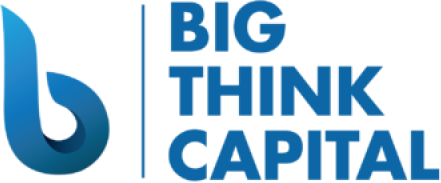Mastering the Mid-Inflation Climate: Smart Strategies for Small Business Funding in 2025
Estimated reading time: 7 minutes
- Understand the impact of inflation on lending costs.
- Prepare financial statements that demonstrate credibility.
- Maintain strong lender relationships for better financing options.
- Optimize working capital and cash flow management strategies.
- Manage and improve your business credit score proactively.
Table of Contents
- Overview of the Current Financial Landscape
- Understanding How Inflation Impacts Small Business Lending
- Tips for Getting a Business Loan During Inflationary Periods
- Strategies for Maintaining Strong Bank Relationships
- Optimizing Working Capital and Cash Flow in Inflation Scenarios
- Managing and Improving Business Credit Scores During Times of Inflation
- Conclusion
- FAQ
Overview of the Current Financial Landscape
As we step into 2025, the Federal Reserve’s interest rate decisions continue to shape the economy, influencing both inflation trends and access to credit for small businesses. Throughout 2024, inflation hovered around 3% to 4%, but forecasts are suggesting a stabilization rather than a decline. According to the Federal Reserve, these inflation rates may persist, affecting consumer behavior and spending patterns.
The current environment poses both challenges and opportunities for small businesses. Higher interest rates, a result of the Fed’s efforts to control inflation, translate into increased borrowing costs. For small businesses dependent on loans for growth, this means re-evaluating their financing strategies.
Understanding How Inflation Impacts Small Business Lending
Inflation can significantly influence small business loan conditions. Here are some primary effects:
- Higher Interest Rates: As the Fed raises rates to combat inflation, lenders often pass those costs onto borrowers. This can lead to higher monthly payments and interest expenses.
- Increased Costs of Goods and Services: Inflation often drives up costs for materials, labor, and services. Small businesses may find themselves needing more capital than they did in previous years to maintain profitability.
- Credit Availability: Lenders typically become more conservative in their underwriting practices during inflationary periods, which can lead to stricter loan eligibility criteria.
Tips for Getting a Business Loan During Inflationary Periods
Securing financing during inflation can be challenging, but with the right approach, it is possible. Here are some actionable tips for small business owners looking to obtain a loan amid rising inflation:
Prepare Detailed Financial Statements
Lenders require a comprehensive view of your business’s financial health. Providing clear and thorough financial statements, including profit and loss statements, cash flow statements, and balance sheets, can boost your credibility.
Research and Compare Lenders
Engage with multiple lenders to understand their terms and rates. Not every lender will have the same response to current economic conditions. By shopping around, business owners can find more favorable terms.
Maintain Strong Relationships with Lenders
Trust plays a crucial role in securing funding. Regular communication and transparency about your business situation can help cultivate strong relationships with existing banks or credit unions. When you need financing, a solid relationship can lead to more favorable loan conditions.
Demonstrate Strong Cash Flow Management
Highlight your business’s cash flow management strategy. This reassures lenders of your ability to repay loans despite economic fluctuations. A well-prepared cash flow projection can show potential lenders your expected income and expenses, providing clarity on your ability to manage financial responsibilities.
Strategies for Maintaining Strong Bank Relationships
Building and nurturing relationships with lending institutions can enhance your chances of obtaining favorable financing terms in an inflationary climate.
Communicate Regularly
Keep your banker informed about changes in your business operations or financial status. Regular check-ins can foster trust and understanding, positioning you favorably for funding when needed.
Utilize Financial Resources
Participate in workshops, seminars, or networking events offered by your bank. Not only does this enhance your understanding of available financial products, but it also makes you a more engaged customer.
Seek Feedback
Ask your banker for feedback on your business’s financial health and ways to improve your lending potential. This can help you identify areas for improvement and align your business goals with potential lending options.
Optimizing Working Capital and Cash Flow in Inflation Scenarios
Effective management of working capital and cash flow is key to surviving and thriving during inflationary periods. Here are strategies to optimize these financial aspects:
Assess Pricing Strategies
Evaluate your pricing models to ensure they reflect current costs while remaining competitive. Utilize market research to inform price adjustments that can improve margins without alienating customers.
Inventory Management
Maintain lean inventory levels to minimize carrying costs while ensuring sufficient stock to meet customer demand. Consider just-in-time inventory systems that allow flexibility in purchasing based on demand.
Explore Alternative Financing Options
In a tight credit environment, consider alternative financing options, such as working capital advances, equipment financing, or merchant cash advances. Each of these solutions can provide quick access to capital without the stringent requirements of traditional loans.
Managing and Improving Business Credit Scores During Times of Inflation
A strong credit score is vital for accessing capital, especially in a mid-inflation scenario where interest rates may be higher. Here are steps you can take to manage and improve your business credit score:
Regularly Review Your Credit Report
Obtaining a timely credit report helps you identify areas for improvement or inaccuracies that could be weighing down your score. Familiarize yourself with businesses that report to credit bureaus and monitor your credit standing on a regular basis.
Pay Bills on Time
Timely payment of bills and debts demonstrates your reliability to lenders and can significantly enhance your credit score. Consider setting up automatic payments to avoid any potential late fees.
Limit New Credit Applications
While it may be tempting to apply for multiple loans to secure the best rates, doing so can temporarily lower your credit score. Focus on only applying for the necessary credit which aligns best with your business needs.
Utilize Credit Responsibly
Maintain low credit utilization ratios by keeping balances well below your credit limits. A good rule of thumb is to keep your utilization under 30% to positively influence your score.
Conclusion
Navigating the mid-inflation landscape in 2025 requires strategic thinking and adaptability. By understanding how inflation impacts lending conditions, maintaining strong relationships with lenders, and optimizing financial practices, small businesses can position themselves for successful financing outcomes.
As you explore your options for funding in these dynamic times, consider reaching out to Big Think Capital. Our team of funding experts is here to provide tailored guidance and solutions to meet your unique financing needs. Visit us at bigthinkcapital.com or speak with one of our funding specialists today. Let us help you illuminate your path to financial success.
FAQ
What is inflation?
Inflation refers to the rate at which the general level of prices for goods and services rises, leading to a decrease in purchasing power.
How does inflation affect small businesses?
Inflation can increase costs for materials, labor, and services while also impacting loan interest rates and credit availability.
What are some options for small business funding during inflation?
Options may include traditional loans, working capital advances, equipment financing, or merchant cash advances.
How can I improve my business credit score?
By regularly reviewing your credit report, paying bills on time, and maintaining low credit utilization ratios, you can improve your credit score.






